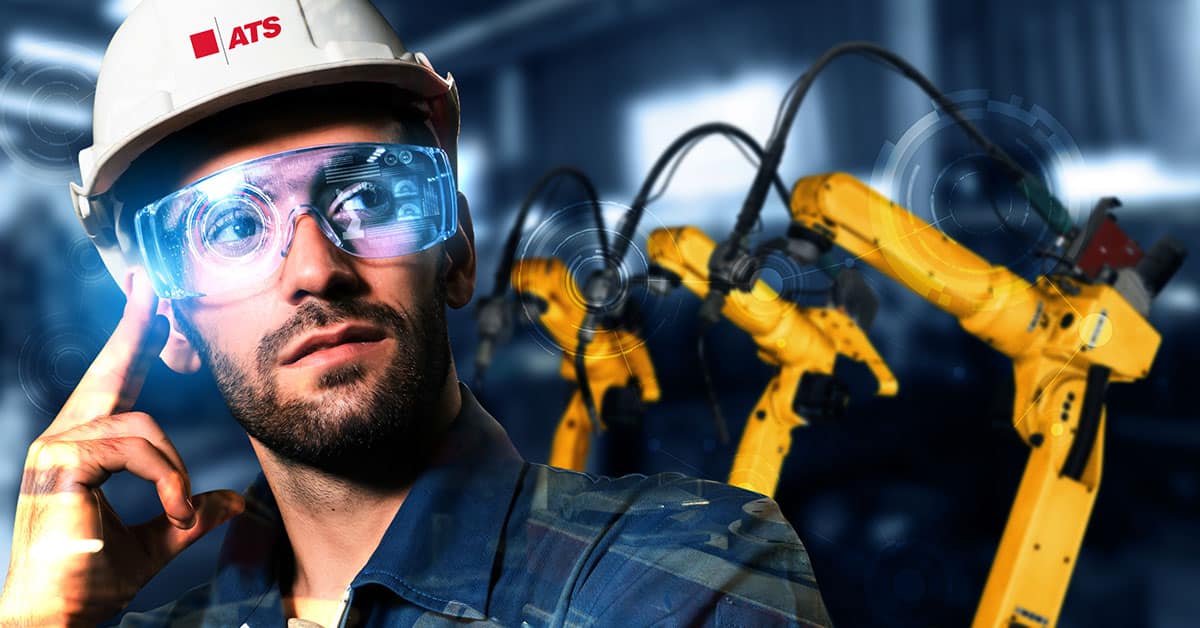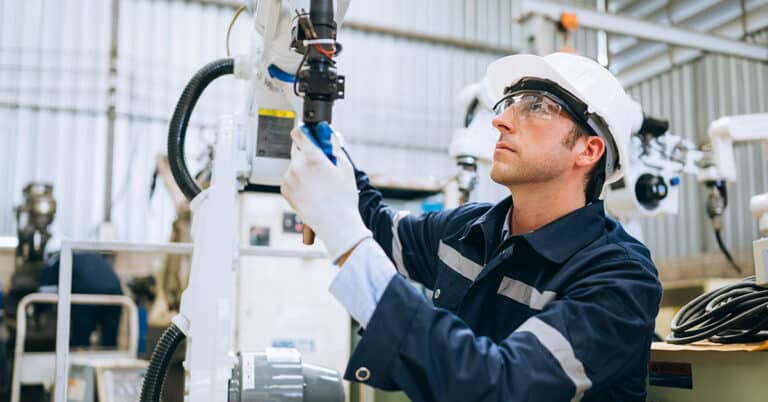Upon rollout to the general public in the early 2010s, wearable technology like smart glasses was viewed as a curiosity and not much more. Several years later, however, the full potential of wearables became much more apparent, even in areas outside of broad consumer use. While the technology never quite caught the interest of the mainstream, smart glasses in manufacturing have made a significant impact, transforming maintenance, design and training.
Basics of smart glasses
Smart glasses are worn as a normal pair of glasses or goggles would be, with a wi-fi or Bluetooth connection built in to enable seamless network communication. Smart glasses also include an integrated camera and microphone, enabling two-way transmission of information. With smart glasses, information appears on the “lens” directly in front of the wearer’s eyes, enabling “heads-up” display without the need to consult a manual or separate device such as a tablet or mobile phone.
This display facilitates overlays of information that are critical for manufacturing and maintenance processes, such as visual references, maintenance procedures, performance data and much more. Smart glasses in maintenance and manufacturing are enabling more accurate, efficient and effective processes across the board.
Using smart glasses in manufacturing & maintenance
Smart glasses in maintenance and manufacturing have a number of uses, applications and benefits. These include:
Machine & part inspection: Smart glasses can help make machine and part inspection processes more accurate and efficient. For example, smart glasses might display a particular component in proper working condition, enabling the technician to compare the part being inspected as if the two were side by side. Smart glasses can also display common maintenance problems and failure states and can even detect and diagnose potential issues using AI technology.
From a documentation standpoint, smart glasses can provide excellent value as well. During inspection processes, rather than writing down readings or entering them into a device, technicians can use voice commands to log inspection readings for audit and tracking purposes. Smart glasses can thus eliminate the need to locate and carry around paperwork or manuals while also enabling more accurate and reliable inspections to be completed more quickly.
Remote monitoring: When a maintenance issue occurs, the typical process is to take the machine out of service, diagnose the problem (or consult with someone who can) and remedy the problem (or, again, consult with someone who can). This can be a time-consuming cycle that results in increased costs — especially if emergency maintenance is required — and extended downtime.
Smart glasses enable technicians and managers to overcome these inefficiencies through remote monitoring, drawing on the expertise of centralized personnel who do not need to be on-site in order to diagnose a maintenance problem and identify the right solution. With smart glasses, remote maintenance enables manufacturing organizations to better leverage the collective knowledge of all personnel across geographies, vastly increasing the speed and effectiveness of maintenance processes while also reducing downtime and additional costs for maintenance contractors or emergency maintenance services.
Maintenance process assistance: Whether for scheduled maintenance or unplanned repairs, smart glasses can assist in maintenance processes, helping to ensure fast, complete and accurate remedies to equipment issues. With smart glasses, the steps in a maintenance process — from diagnosis to implementation — can be displayed in real-time to the technicians, cycling through each step as it is completed. As with inspections, smart glasses can also use visual technology to help identify problems, speeding up the diagnostic stage of the process and identifying potential issues during routine maintenance that may go otherwise unnoticed.
Beyond a simple list of steps, smart glasses can show the wearer videos or interactive diagrams of a maintenance process in action, providing additional guidance for less-experienced technicians who may not otherwise be able to complete a task.
Technical training: Smart glasses have proven extremely effective for technician training, starting with videos and interactive learning programs similar to those used in maintenance assistance. From there, trainees can use smart glasses to simulate a hands-on experience with a new process through augmented reality (AR) technology, replicating repair or inspection steps without handling any equipment. This helps to speed up and improve training, reduce costs, improve safety and maximize equipment uptime.
With these benefits and applications in mind, it is apparent that smart glasses have come into their own as a transformative tool in manufacturing maintenance, training and more. With AI and other supporting technology continuing to evolve, smart glasses are poised to make an even bigger impact in the near future and beyond. If interested in learning more about technology-driven industrial maintenance, contact ATS today.






